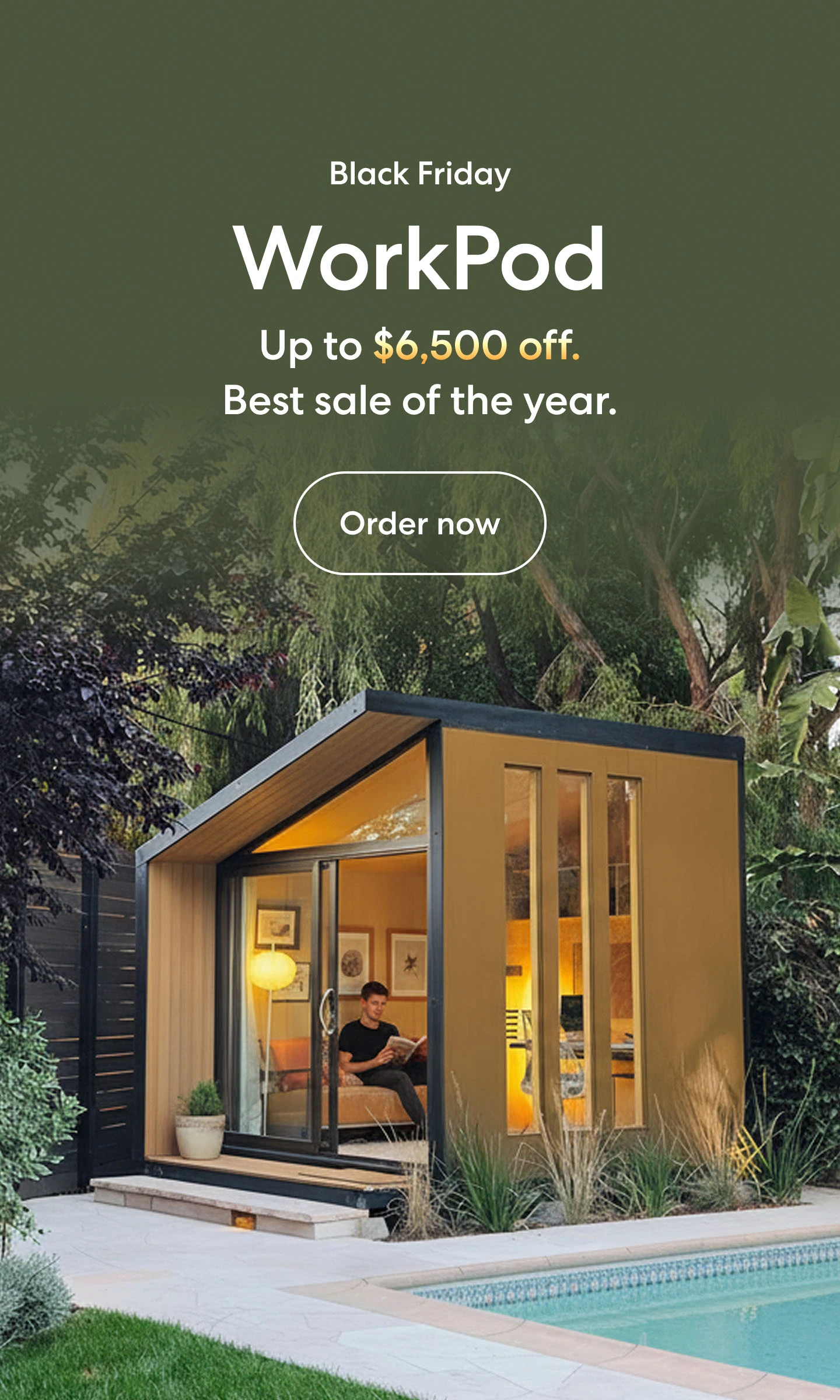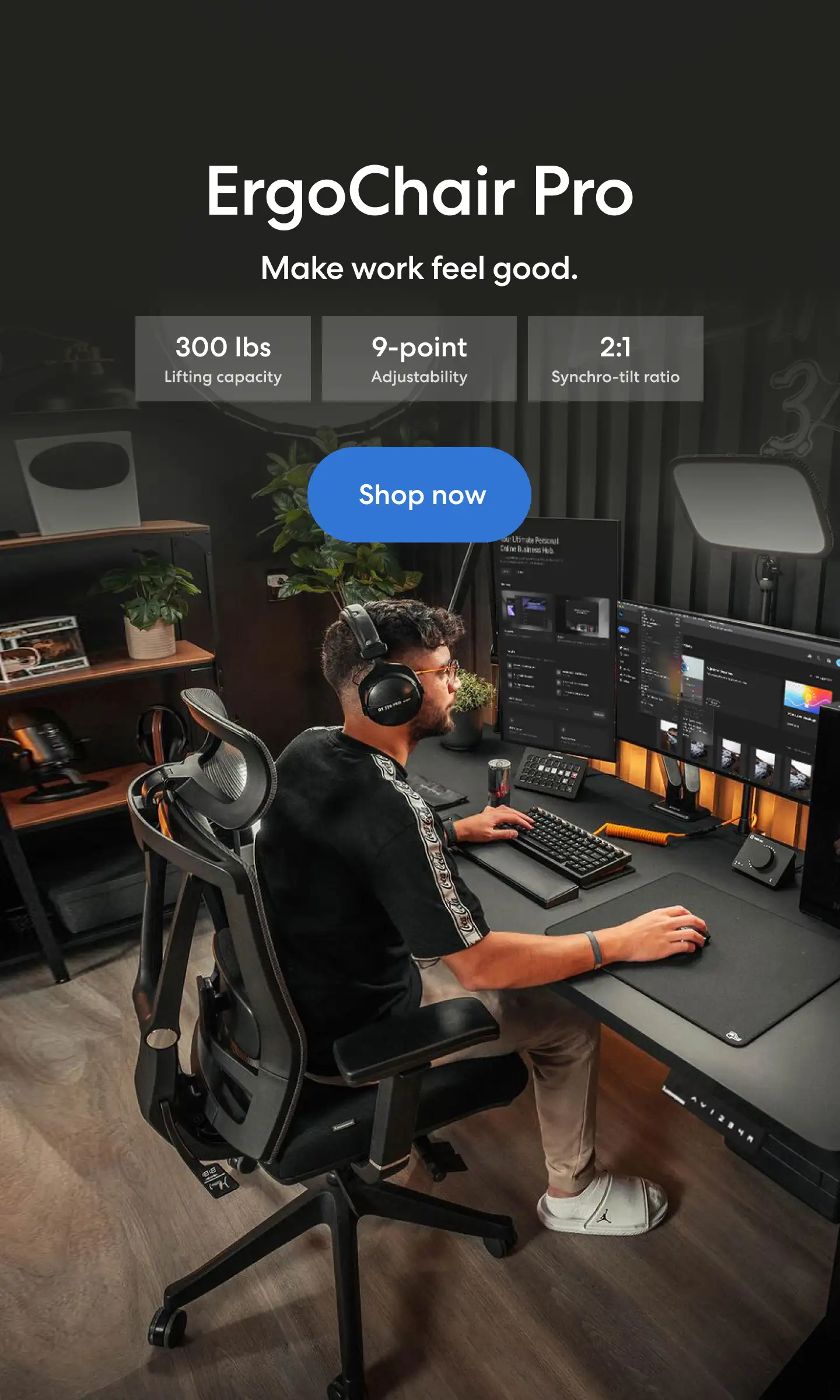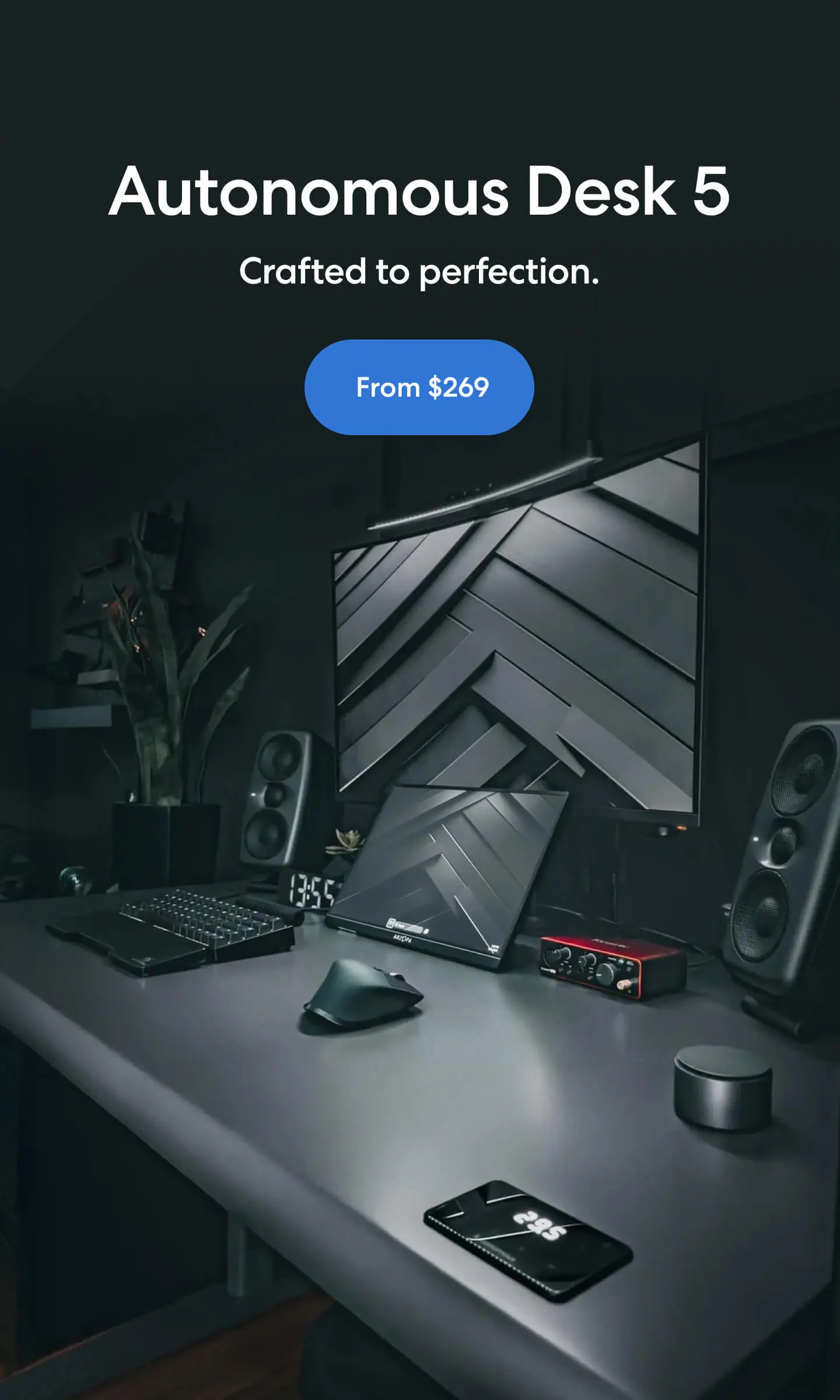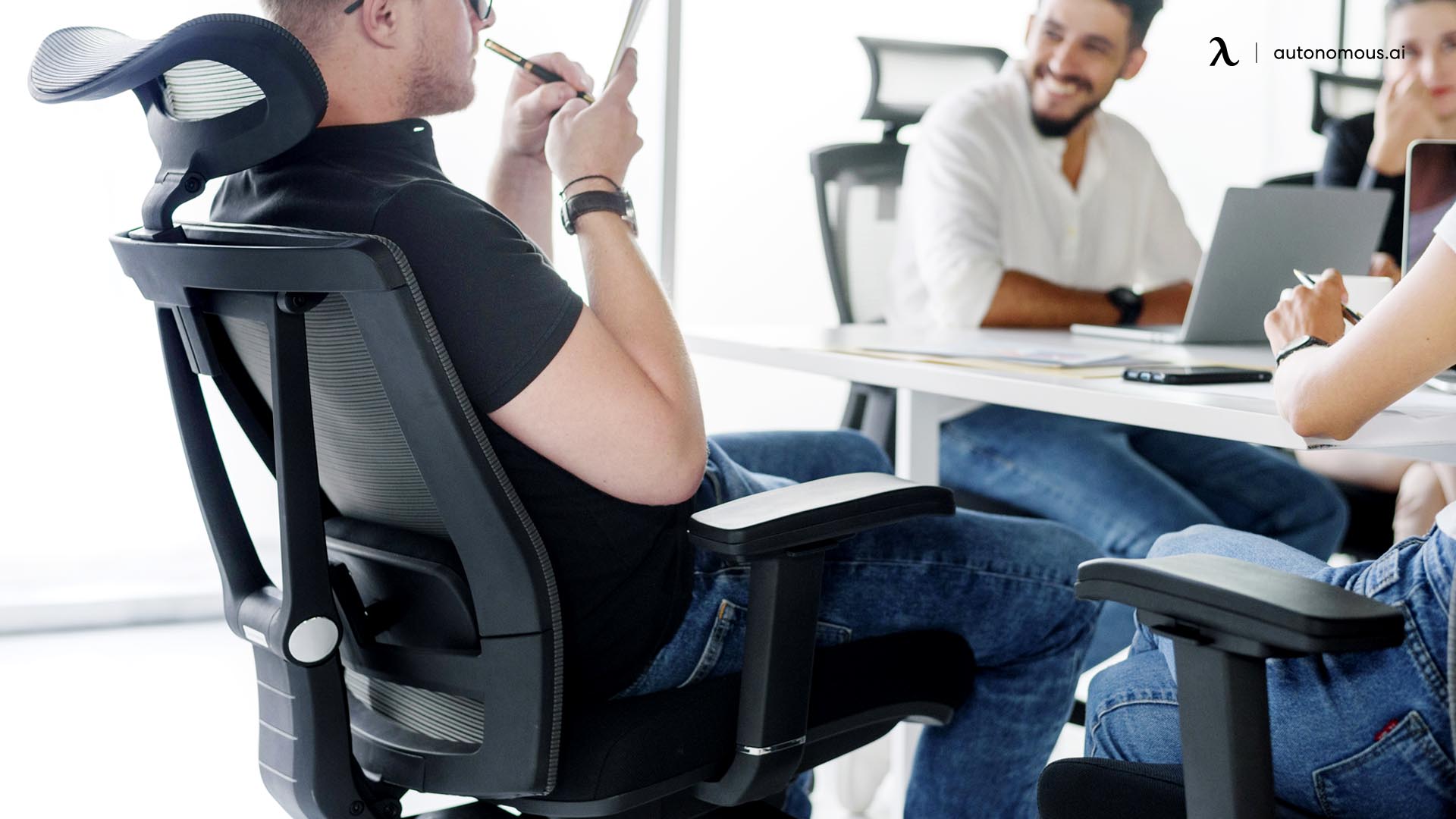
Table of Contents
- Why Office Workers Need The Best Ergonomic Backpack
- 10 Best Ergonomic Backpacks for Office Workers In 2025
- 1. Bellroy Transit Backpack
- 2. Samsonite Xenon 3.0
- 3. Nordace Siena Pro 17 Backpack
- 4. NOMATIC Backpack
- 5. Thule Subterra Backpack 27L
- 6. Mous Extreme Commuter Backpack
- 7. Peak Design Everyday Backpack
- 8. THE NORTH FACE Borealis Commuter Laptop Backpack
- 9. Timbuk2 Authority Laptop Backpack Deluxe
- 10. Everki Atlas Business Laptop Backpack
- How To Choose The Right Ergonomic Backpack For Work
- Tips For Maintaining Good Posture While Using An Ergonomic Backpack
- Beyond The Backpack: Creating An Ergonomic Workspace For Office Workers
- FAQs
- Conclusion
Carrying your laptop, gadgets, and daily essentials shouldn’t leave your shoulders aching by the time you reach the office. That’s where finding the best ergonomic backpack makes all the difference.
Just like other office must-haves that support your productivity and wellbeing, an ergonomic backpack is an investment in how you feel throughout the workday—not just during the commute.
Whether you commute by train, bike, or foot, an ergonomic backpack for back pain helps you stay organized and pain-free through every workday. Let’s dive into what makes these backpacks truly ergonomic and explore some top choices based on your commuting style and work needs.
Why Office Workers Need The Best Ergonomic Backpack
If you've ever arrived at the office with aching shoulders or a stiff neck, you know that your backpack choice matters more than you might think. A standard bag might get your laptop from point A to point B, but a well-designed ergonomic backpack actually works with your body throughout the commute—and that makes a real difference over time.
- Your posture takes a hit without proper support
Most of us carry 10-20 pounds between our laptop, charger, water bottle, and daily essentials. Without ergonomic design, that weight pulls your shoulders back and strains your neck, leading to a forward lean posture that persists even after you've set the bag down. An ergonomic backpack positions the load close to your spine and uses padded straps to keep your shoulders level and relaxed.
- Long commutes compound the problem
Whether you're walking 15 minutes from the train station or cycling across town, repetitive impact without adequate cushioning adds up. Ergonomic padding doesn't just feel softer—it actually absorbs shock with each step, reducing the cumulative stress on your lower back and shoulders.
- Organization affects how the weight sits
It's not just about having pockets—it's about strategic placement. When your laptop sits in a dedicated sleeve close to your back panel and smaller items are distributed in outer compartments, the weight stays balanced. A poorly organized bag where everything shifts around throws off your center of gravity and forces your body to compensate, often without you realizing it.
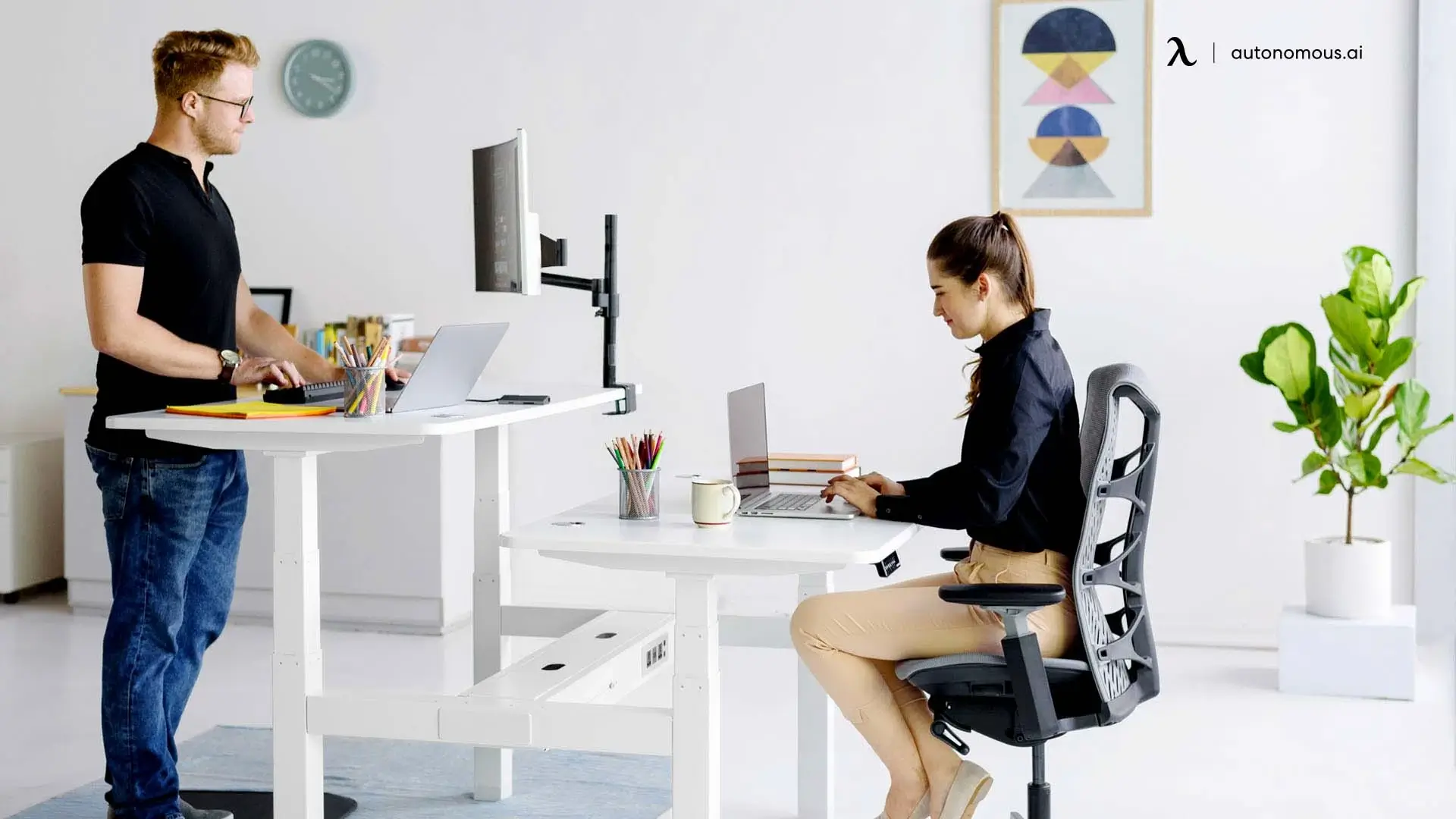
- Professional appearance still matters
You could have the most supportive backpack in the world, but if it looks like hiking gear, it's not ideal for client meetings or corporate environments. Modern ergonomic backpacks blend support features with sleek, minimalist designs that complement business attire. They're built to transition seamlessly from your commute to the conference room.
- Comfort isn't just about the commute
Even after you arrive at the office, you might wear your backpack between floors, during lunch breaks, or when moving between buildings. Breathable materials and contoured straps prevent hot spots and pressure points from building up during these shorter carrying periods. Over a full workday, these small comfort features prevent the gradual fatigue that leaves you drained by 5 PM.
For professionals juggling hybrid schedules, frequent travel, or simply long daily commutes, investing in an ergonomic backpack for back pain isn't about luxury—it's about protecting your body from the subtle, cumulative strain that comes with carrying your work essentials day after day.
10 Best Ergonomic Backpacks for Office Workers In 2025
Finding the best ergonomic backpack can transform your daily commute from a pain point into a comfortable experience. Whether you're navigating crowded trains, walking city blocks, or cycling to the office, the right ergonomic backpack for work supports healthy posture, distributes weight evenly, and keeps you pain-free throughout the day.
Below, we've tested and evaluated the top ergonomic backpacks that office professionals rely on in 2025:
- Side-by-Side Comparison:
Backpack | Key Ergonomic Feature | Best For | Weight Distribution | Laptop Size |
Bellroy Transit Backpack | Curved shoulder straps and structured back panel | Daily commuting | Even across the shoulders and back | Up to 16" |
Samsonite Xenon 3.0 | Air mesh lumbar padding with thick straps | Business travel | Balanced core support | Up to 17" |
Nordace Siena Pro 17 Backpack | 3D back panel with chest buckle support | Hybrid work & meetings | Centered along the spine | Up to 17" |
Nomatic Backpack | Molded back panel with wide straps | Tech-heavy professionals | Shoulder-to-waist balance | Up to 16" |
Thule Subterra Backpack 23L | Dense foam padding with lumbar support | Office-to-travel transitions | Aligned along the spine | Up to 15.6" |
Mous Extreme Commuter Backpack | EVA foam adaptive back panel | Cyclists & city commuters | Close to the body’s center | Up to 16" |
Peak Design Everyday Backpack | Pivoting harness system for natural movement | Remote workers & creatives | Dynamic weight shift | Up to 16" |
THE NORTH FACE Borealis | FlexVent suspension with molded straps | Active office workers | Upper-lower load balance | Up to 15" |
Timbuk2 Authority Deluxe | Air mesh back with pressure relief zones | Heavier daily loads | Even along the back frame | Up to 17" |
Everki Atlas Business Backpack | Height-adjustable shoulder harness | Executives & frequent travelers | Stabilized torso alignment | Up to 17.3" |
1. Bellroy Transit Backpack
Best for: All-day comfort during multi-modal commutes
The curved shoulder straps on the Bellroy Transit really do make a difference—I noticed less shoulder tension even after carrying my laptop and chargers for hours. The structured back panel keeps everything sitting right against your spine instead of pulling backward. If you're switching between walking and public transit, the contoured padding adapts nicely without any awkward shifting.
2. Samsonite Xenon 3.0
Best for: Business travelers with hybrid commutes
What stands out in this ergonomic backpack for back pain is how the air mesh padding actually keeps your back from getting sweaty during rush hour. The lumbar support hits the right spot without feeling bulky. I've found the SmartSleeve particularly useful when I'm rolling luggage through the airport—the backpack stays put instead of sliding around.
3. Nordace Siena Pro 17 Backpack
Best for: Extended commutes requiring maximum support
This ergonomic backpack for women is built for the long haul. The 3D back panel might sound like marketing speak, but you can feel how it keeps the weight distributed close to your body. After using it for a 90-minute commute, my lower back didn't have that usual ache. The chest buckle actually serves a purpose here—it takes pressure off your shoulders when you're carrying a full load.
4. NOMATIC Backpack
Best for: Tech professionals carrying heavy gear
If you're hauling a laptop, tablet, chargers, and maybe a portable monitor, the Nomatic handles it without digging into your shoulders. The molded back panel follows your spine's curve in a way that feels supportive rather than rigid. Those wide shoulder straps distribute weight better than the standard thin ones you see on most backpacks.
5. Thule Subterra Backpack 27L
Best for: Minimalist professionals prioritizing spine health
Thule really focused on spine alignment with this one. The dense foam keeps the pack stable against your back—no bouncing when you're walking quickly or climbing subway stairs. I appreciated how the ventilated back panel kept air flowing even when I was wearing a suit jacket.
6. Mous Extreme Commuter Backpack
Best for: Workers needing weather-resistant durability
The EVA foam actually molds to your back over time, so it gets more comfortable the more you use it. What impressed me was how this ergonomic backpack for work maintained its structure even when packed full—no sagging or pulling that throws off your posture. Plus, the padding on the straps stays comfortable even on days when you're carrying more than usual.
7. Peak Design Everyday Backpack
Best for: Creative professionals carrying cameras and devices
The flexible harness system is genuinely clever—it shifts with you as you move rather than staying rigid. If you're constantly pulling out your phone, cables, or camera gear, you'll notice how the weight rebalances automatically. The lumbar padding stays consistent whether the bag is half-full or maxed out.
8. THE NORTH FACE Borealis Commuter Laptop Backpack
Best for: Active commuters who walk or bike
This ergonomic backpack for work suspension lives up to the hype. I've used this for bike commutes, and the custom-molded straps genuinely improve how you sit and stand. The breathable back panel is a game-changer if you're biking in warmer weather—you're not arriving at the office with a soaked shirt.
9. Timbuk2 Authority Laptop Backpack Deluxe
Best for: Budget-conscious professionals wanting premium comfort
Don't let the price fool you—the air mesh ventilation and foam backing work just as well as pricier options. The reinforced shoulder straps hold up even when you're at max capacity with files and a 15-inch laptop. It's one of those bags that just works without requiring any fussy adjustments.
10. Everki Atlas Business Laptop Backpack
Best for: Tall or petite professionals needing a customizable fit
The adjustable shoulder harness is perfect if you've struggled to find backpacks that fit properly. I'm 5'10", and being able to adjust the height meant the weight actually sat where it should. The internal frame keeps heavy loads from sagging, which makes a real difference on longer commutes or travel days.
How To Choose The Right Ergonomic Backpack For Work
Selecting the best ergonomic backpack for work means finding one that fits your lifestyle, body shape, and daily routine. Beyond design and brand, the right backpack should make carrying your essentials effortless — not something you notice throughout the day. Here’s what to consider before making your choice:
- Evaluate your commute:
If you walk, bike, or use public transport, choose a lightweight backpack with padded straps and lumbar support. It reduces strain during long commutes and helps you maintain an upright posture.
- Match your work setup:
Carry a 15” or larger laptop? Go for a backpack with a dedicated padded compartment that fits your device snugly without pressing on your back.
- Prioritize comfort over size:
A slightly smaller but ergonomic backpack often feels better than a large one that overloads your shoulders. Look for structured padding and adjustable straps for even pressure distribution.
- Check airflow design:
Backpacks with ventilated mesh panels prevent overheating, especially for professionals moving between offices or traveling in warmer climates.
- Think about weight balance:
Choose a model that keeps heavy items close to your spine — this improves balance and reduces fatigue during long hours of wear.
- Pick a professional aesthetic:
For office use, stick with sleek silhouettes, neutral colors, and durable fabrics that complement business attire while maintaining ergonomic support.
An ergonomic backpack should feel like a natural extension of your body — one that keeps you supported, organized, and confident from your first meeting to your evening commute.
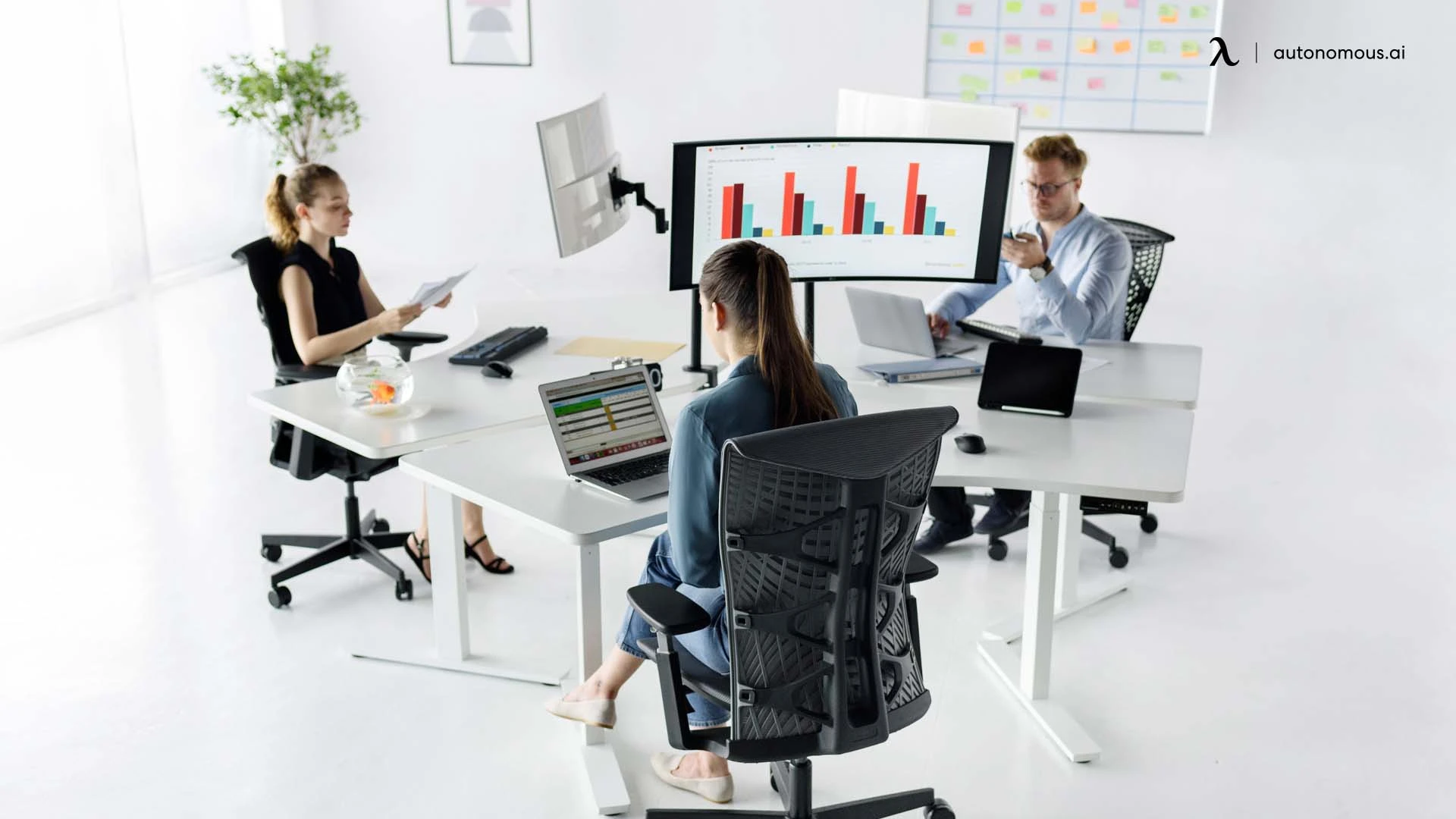
Tips For Maintaining Good Posture While Using An Ergonomic Backpack
Even the most ergonomic backpack can only do so much if it’s not worn correctly. Small adjustments in how you carry it can make a big difference in comfort, balance, and long-term posture. Here are practical tips to help you get the most ergonomic benefit from your backpack:
- Adjust both shoulder straps evenly: Always wear both straps to keep the load balanced. Uneven strap tension can cause one shoulder to overcompensate and lead to strain.
- Tighten the straps for a snug fit: The backpack should rest close to your back, sitting about two inches above your waist. A tighter fit keeps the weight aligned with your spine.
- Use the sternum and waist straps (if available): These help transfer some of the weight from your shoulders to your hips, easing upper back pressure during long walks or commutes.
- Distribute weight wisely: Place heavier items like laptops and books closest to your back panel, and lighter items in outer pockets to maintain balance.
- Keep your posture upright: Stand tall with your shoulders relaxed and avoid leaning forward. The ergonomic design works best when your spine is naturally aligned.
Wearing your backpack the right way ensures that every ergonomic feature — from the padding to the support frame — works together to protect your posture and keep you comfortable throughout the day.
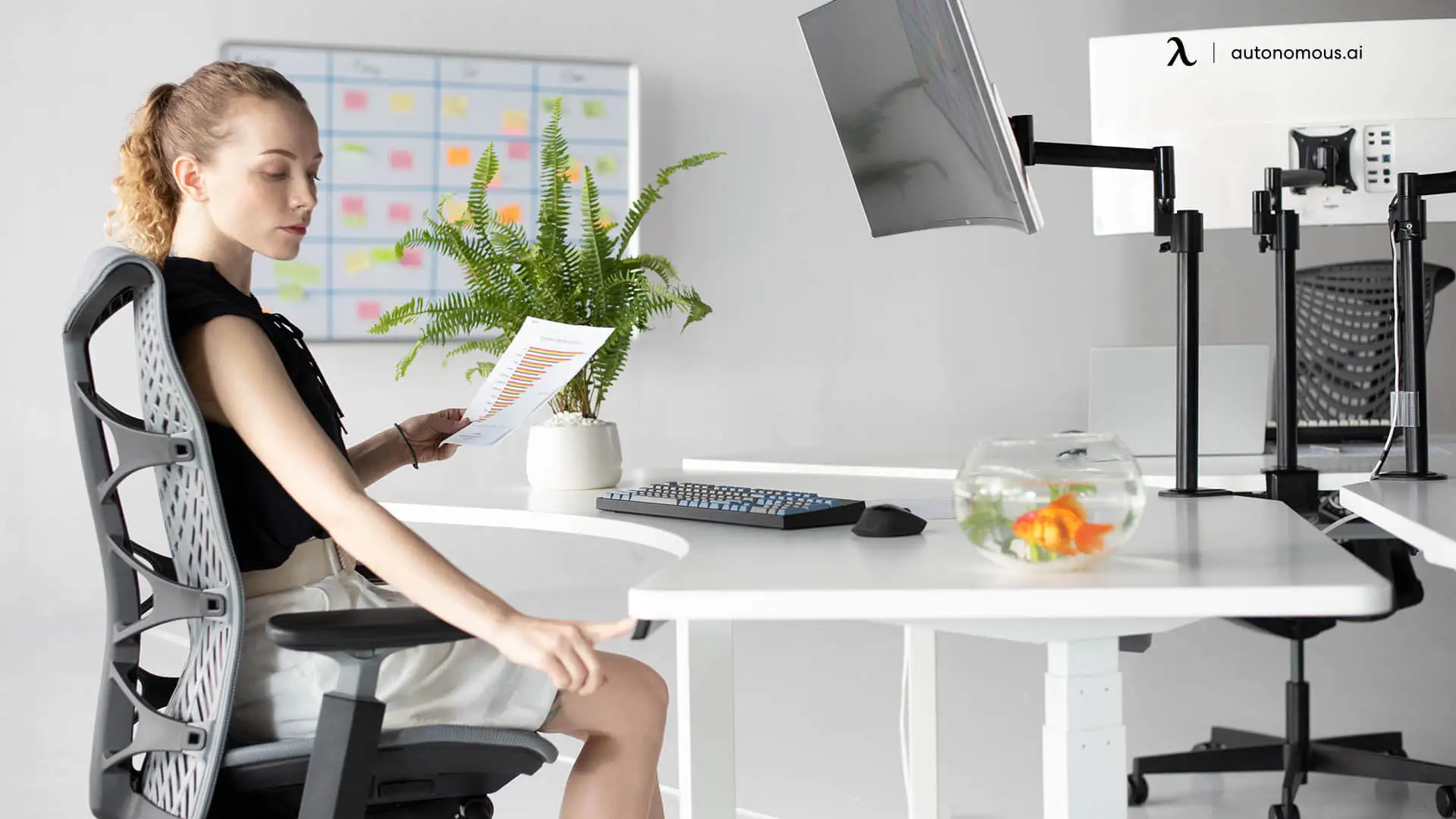
Beyond The Backpack: Creating An Ergonomic Workspace For Office Workers
Your ergonomic journey shouldn't end when you take off your backpack. If you're investing in proper support for your commute, it makes sense to extend that same care to where you spend most of your day—your workspace.
I've noticed that many office workers focus on one or the other, but the benefits really compound when you address both. Here's how to create a workspace that complements your ergonomic backpack:
- Invest in a supportive office chair:
Look for office chairs with adjustable lumbar support, armrests, and seat depth. Your feet should rest flat on the floor with your knees at a 90-degree angle—similar to how your ergonomic backpack keeps your spine aligned while standing. The right chair makes as much difference as the right backpack.
- Try a sit-stand desk converter:
Alternating between sitting and standing throughout the day prevents the stiffness that builds up from static postures. I started with a simple desktop riser, and it's made a noticeable difference in how my back feels by 3 PM. You don't need a full motorized desk—even a manual converter works
- Add a footrest for better leg circulation:
If your feet don't reach the floor comfortably, an office footrest helps maintain proper posture and reduces pressure on your lower back. It's a small addition that keeps your body aligned from your feet up through your spine—the same principle your ergonomic backpack uses for weight distribution.
- Adjust your workspace lighting:
Poor lighting causes you to lean forward and strain your neck. Position your desk near natural light when possible, or use a desk lamp that reduces glare on your screen.
- Add a cushioned anti-fatigue mat if you stand:
For standing desk users, these anti-fatigue mats encourage subtle movement and reduce pressure on your feet and lower back. It's the workspace equivalent of your backpack's breathable padding—designed to keep you comfortable over extended periods.
- Organize cables and create clear desk zones:
A cluttered desk forces you into awkward reaching positions. Use cable management and keep frequently-used items within easy reach. Think of it like the organized compartments in your ergonomic backpack—everything has its place, reducing unnecessary strain
The connection is simple: if your backpack supports healthy posture during your commute and your workspace does the same for eight hours at the office, you're creating a full-day ergonomic routine. Your body will thank you for the consistency, and you'll notice less fatigue, fewer tension headaches, and better focus throughout your workday.
Whether you're working from a corporate office, a home setup office, or bouncing between coworking spaces, pairing the best ergonomic backpack with a thoughtfully arranged workspace creates the foundation for long-term comfort and productivity.
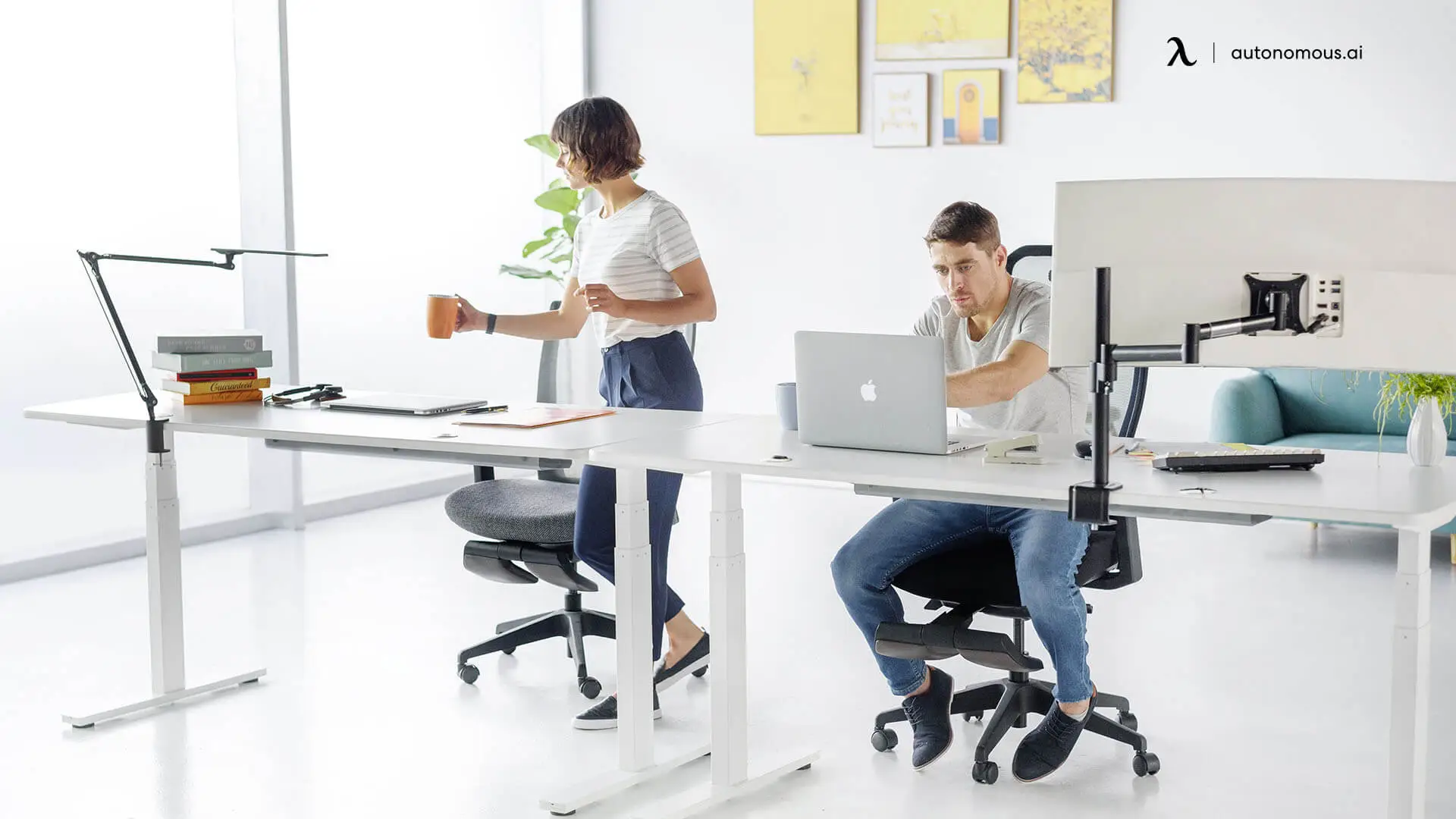
FAQs
1. What backpacks are good for back pain?
Backpacks designed with ergonomic support are best for relieving back pain. Look for models that feature contoured back panels, padded shoulder straps, and lumbar cushioning to evenly distribute weight across your back.
2. What backpacks are good for posture?
The best ergonomic backpack for posture encourages your spine’s natural alignment by keeping the load close to your body. Choose one with adjustable straps, sternum or waist support, and a structured back panel that prevents slouching.
3. What is an ergonomic backpack?
An ergonomic backpack is designed to reduce strain on your back, shoulders, and neck by promoting balanced weight distribution. It typically includes cushioned straps, a ventilated back panel, and a contoured frame that follows the curve of your spine. The goal is to enhance comfort, improve posture, and minimize the risk of back pain from daily carrying.
4. How much weight is safe to carry in the best ergonomic backpack?
Keeping the load under 10–15% of your body weight helps maintain comfort and prevents injury. Heavier packs, even if ergonomic, can strain your back over long durations.
5. Are ergonomic backpacks better than standard backpacks for daily office use?
Yes, because they incorporate design features like even weight distribution and back support, they reduce fatigue, strain, and posture issues that standard packs often worsen.
6. Can the best ergonomic backpack be used for long commutes?
Yes, many are built with durable materials, ventilation, and balanced support, making them suitable for extended walking, biking, or public transport use without discomfort.
7. How should I wear the best ergonomic backpack for optimal comfort?
Use both straps, adjust the length so the backpack sits close to your back, engage the sternum or waist straps if available, and keep the heaviest items near your back panel for balance.
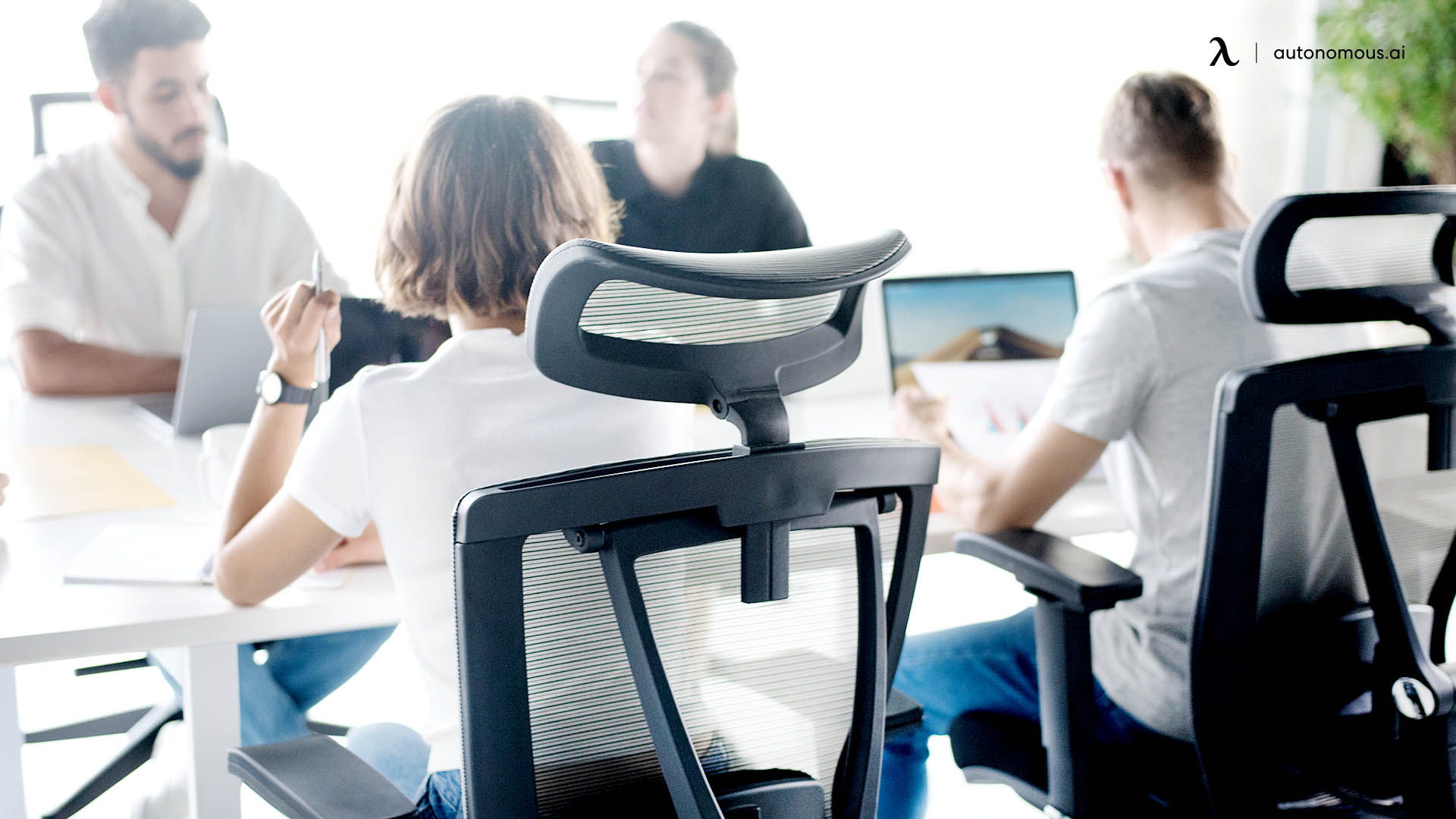
Conclusion
Finding the best ergonomic backpack is about more than comfort — it’s an investment in your health and productivity. The right backpack supports your posture, relieves pressure on your shoulders, and keeps your essentials organized for a smoother workday.
Whether you’re commuting across the city or traveling between offices, an ergonomic design helps you stay balanced and pain-free from morning to evening.
And when you pair it with healthy habits like chair exercises for upper body strength during work breaks or seated back stretches at your desk, you're creating a complete approach to workplace wellness.
Choose a backpack that fits your lifestyle, supports your body, and turns every commute into a comfortable part of your routine.
Spread the word
.svg)

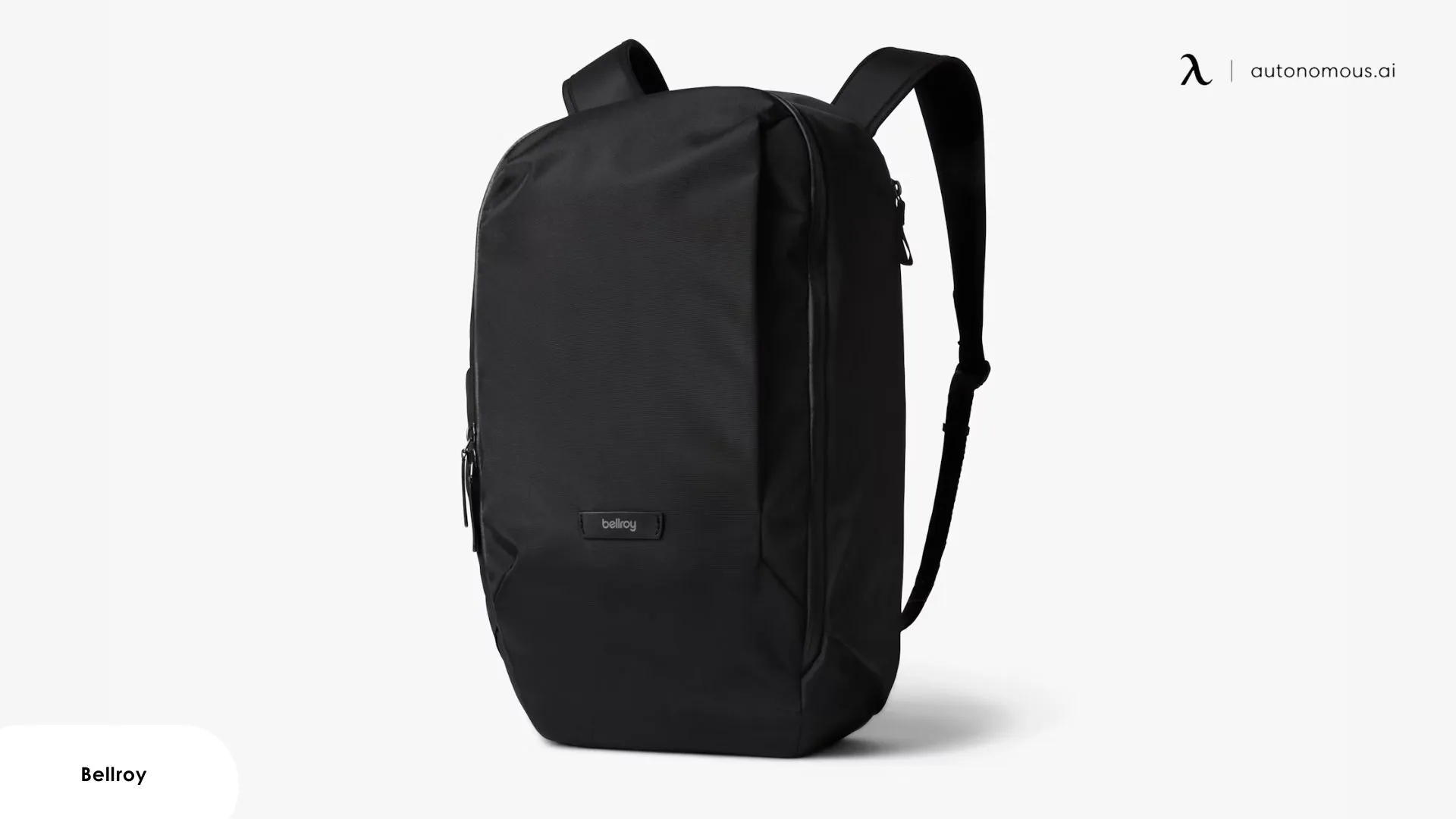

.webp)
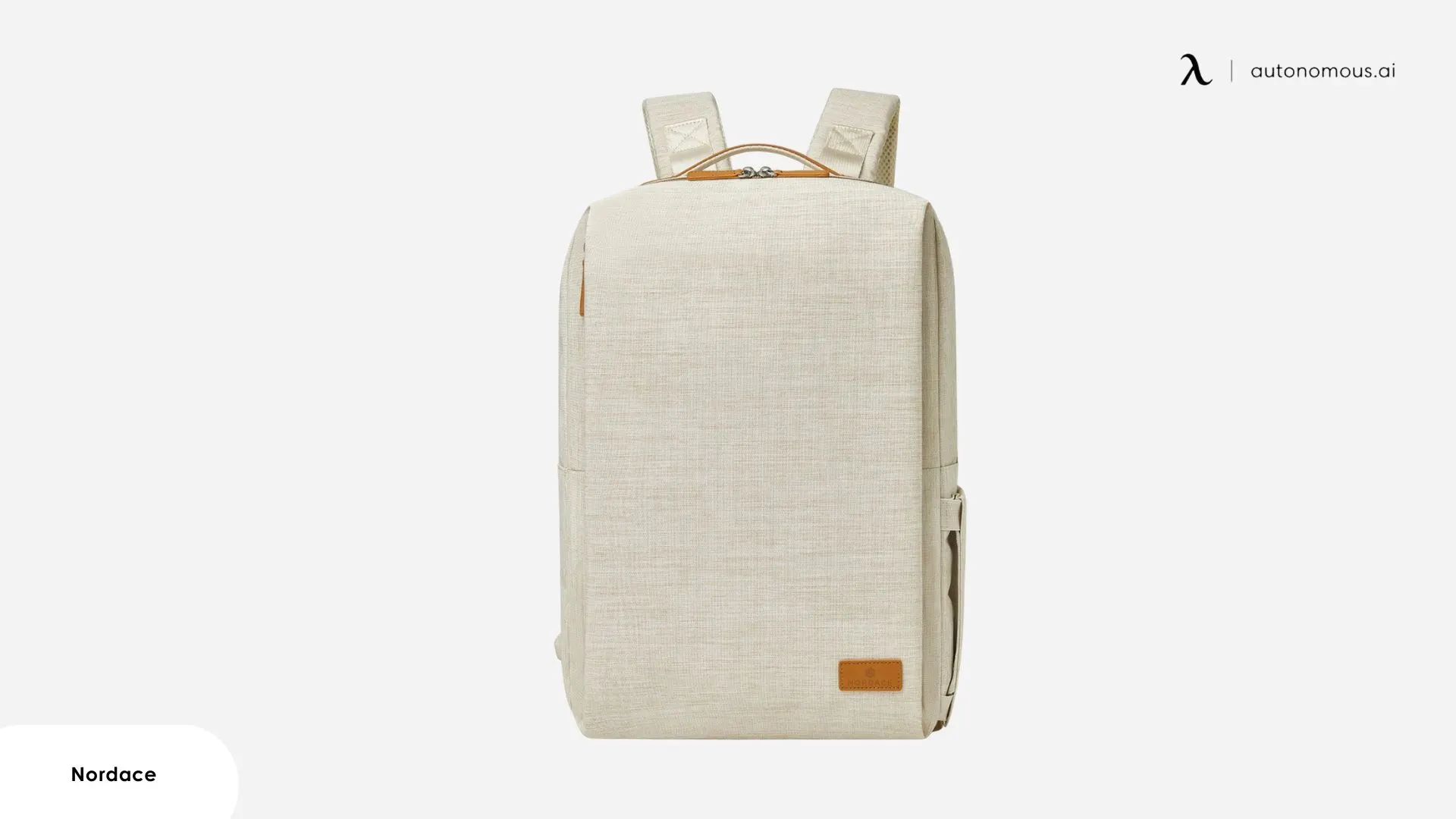
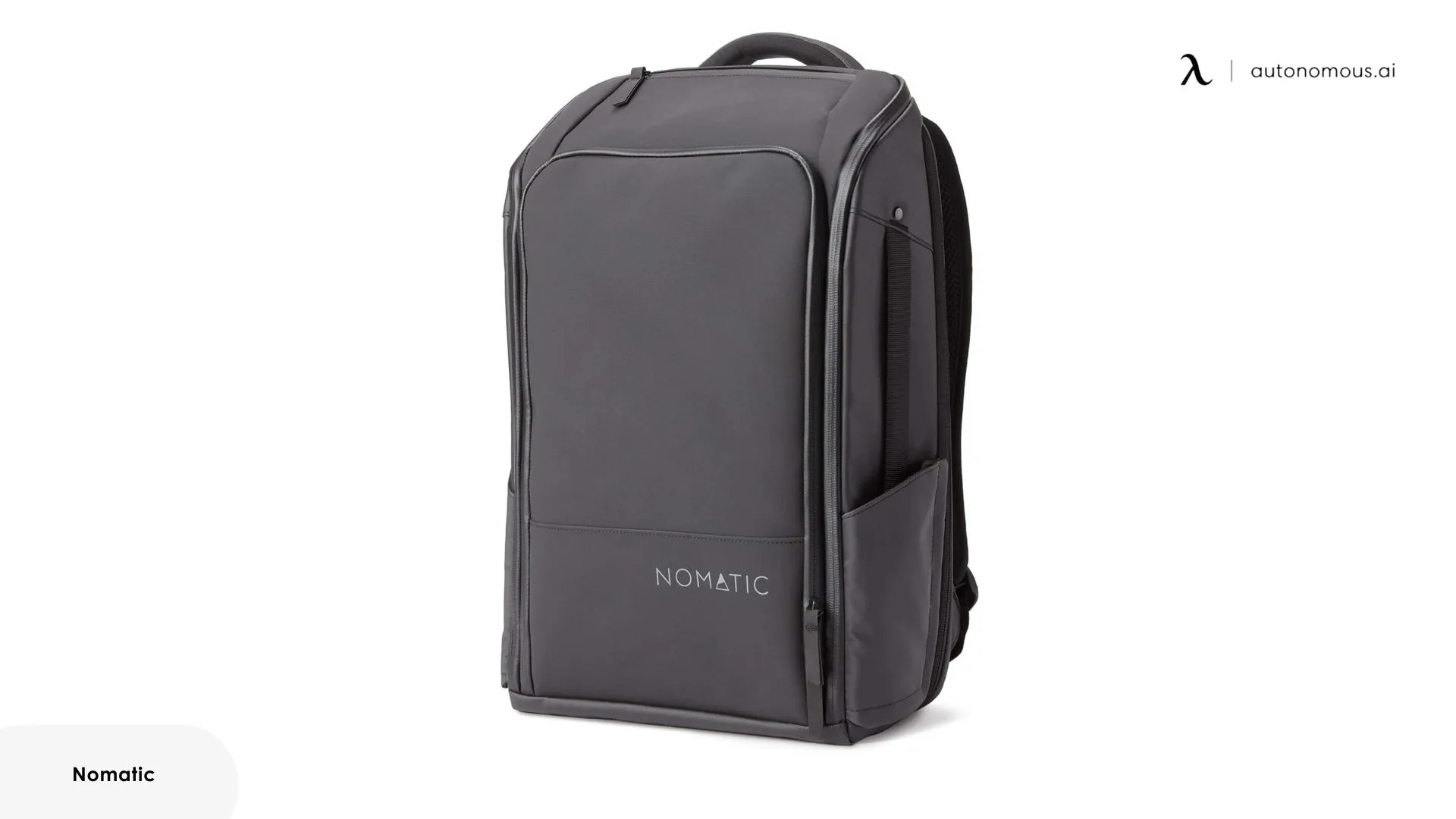

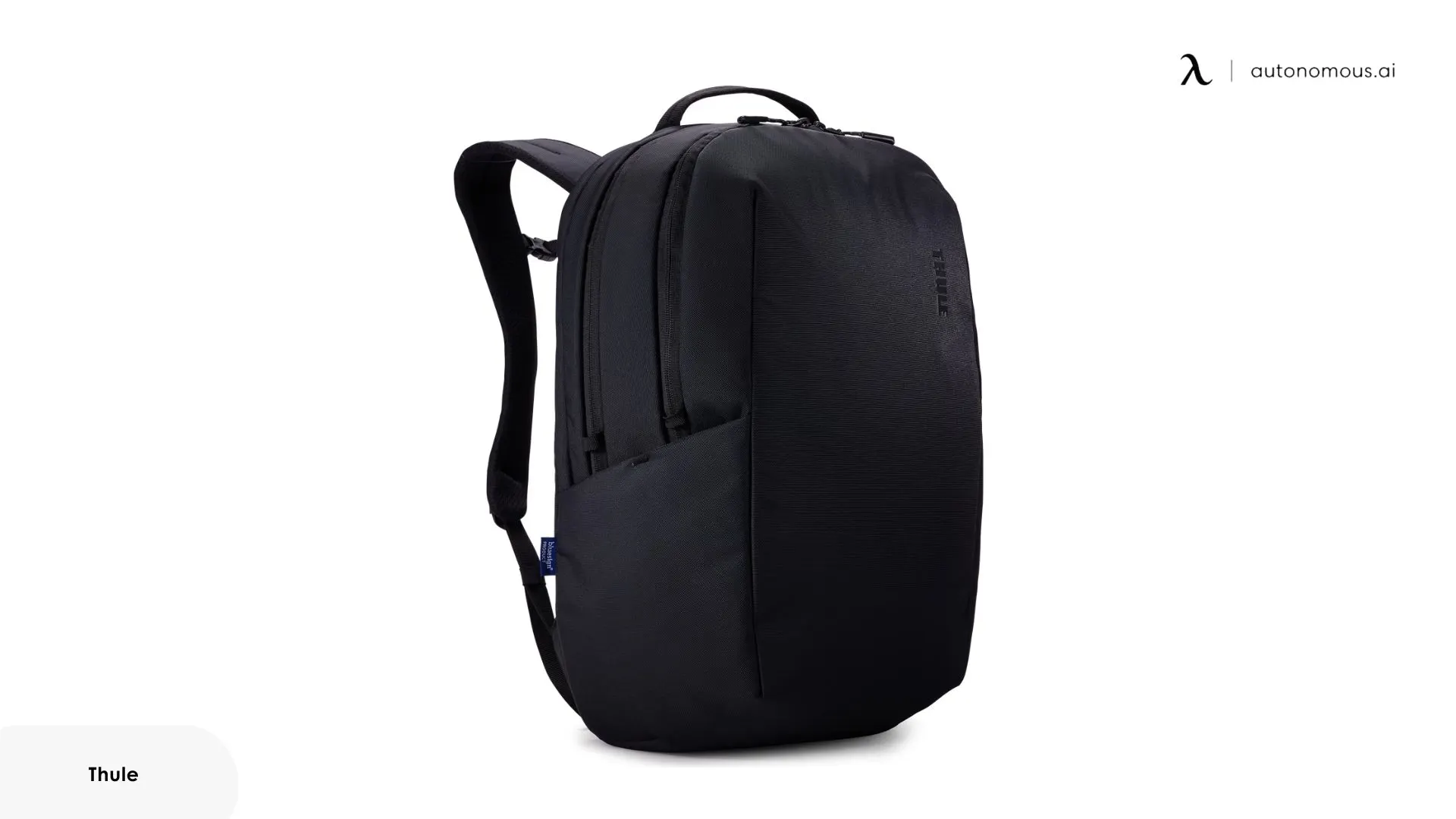
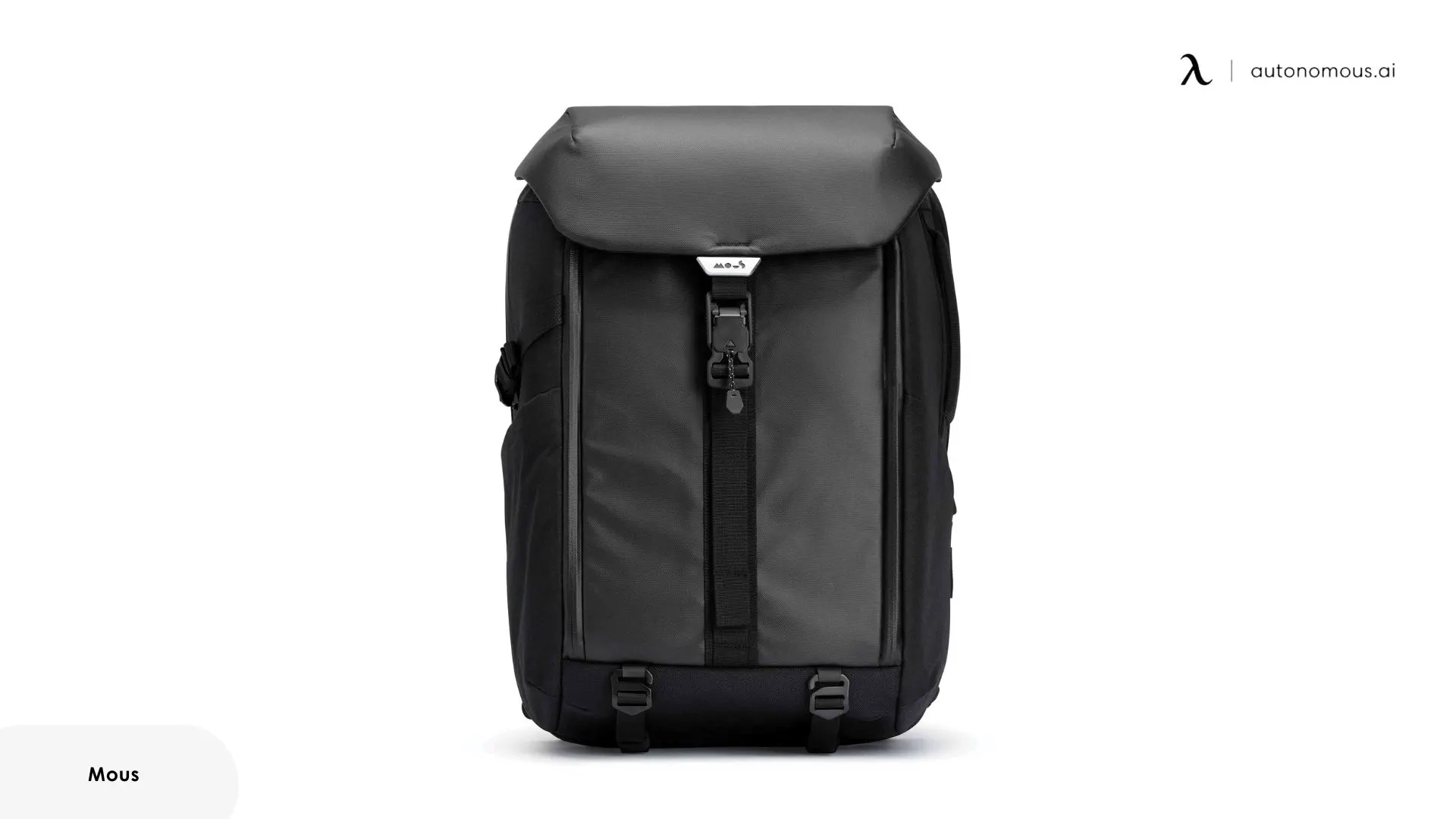
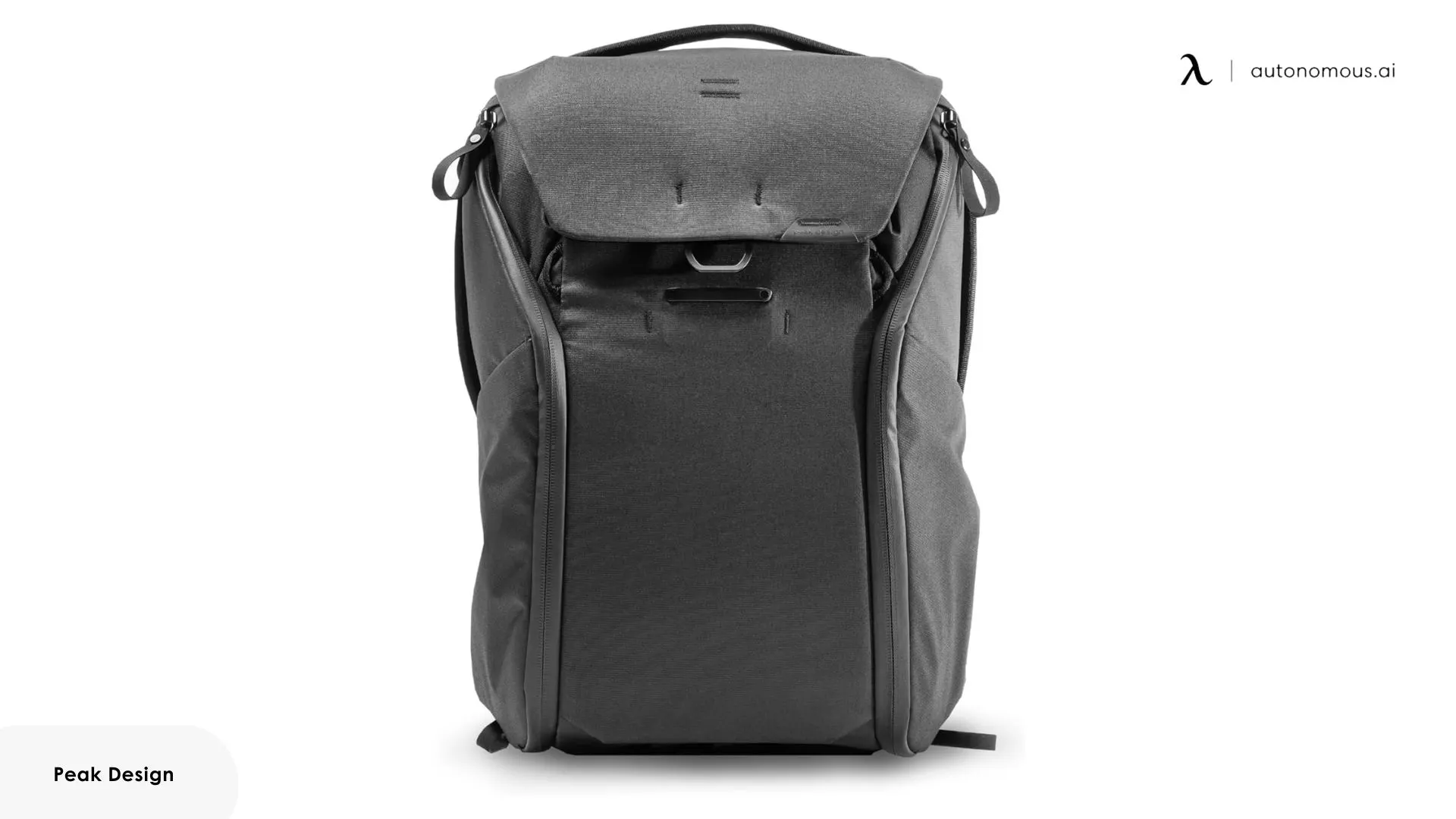
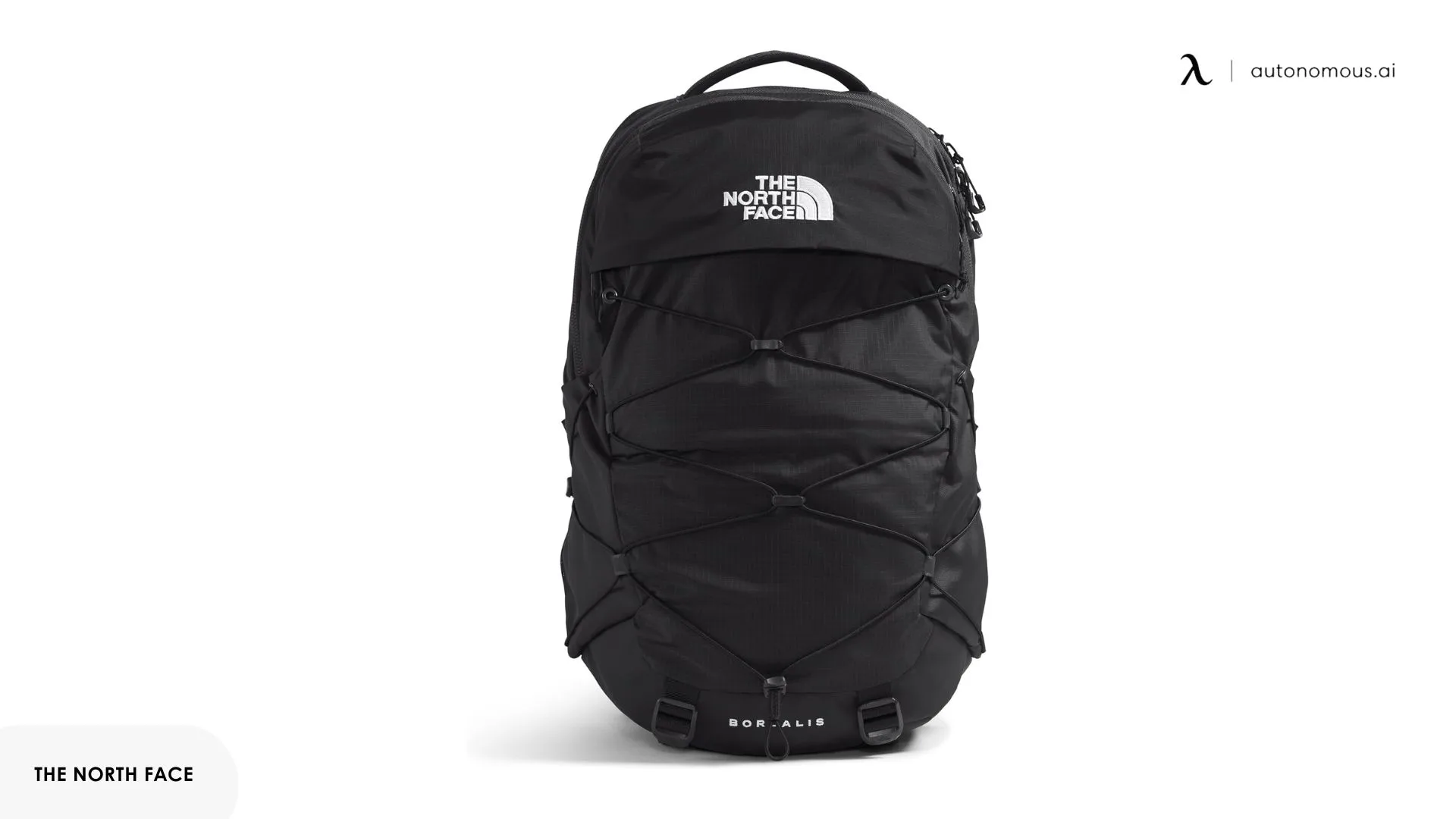
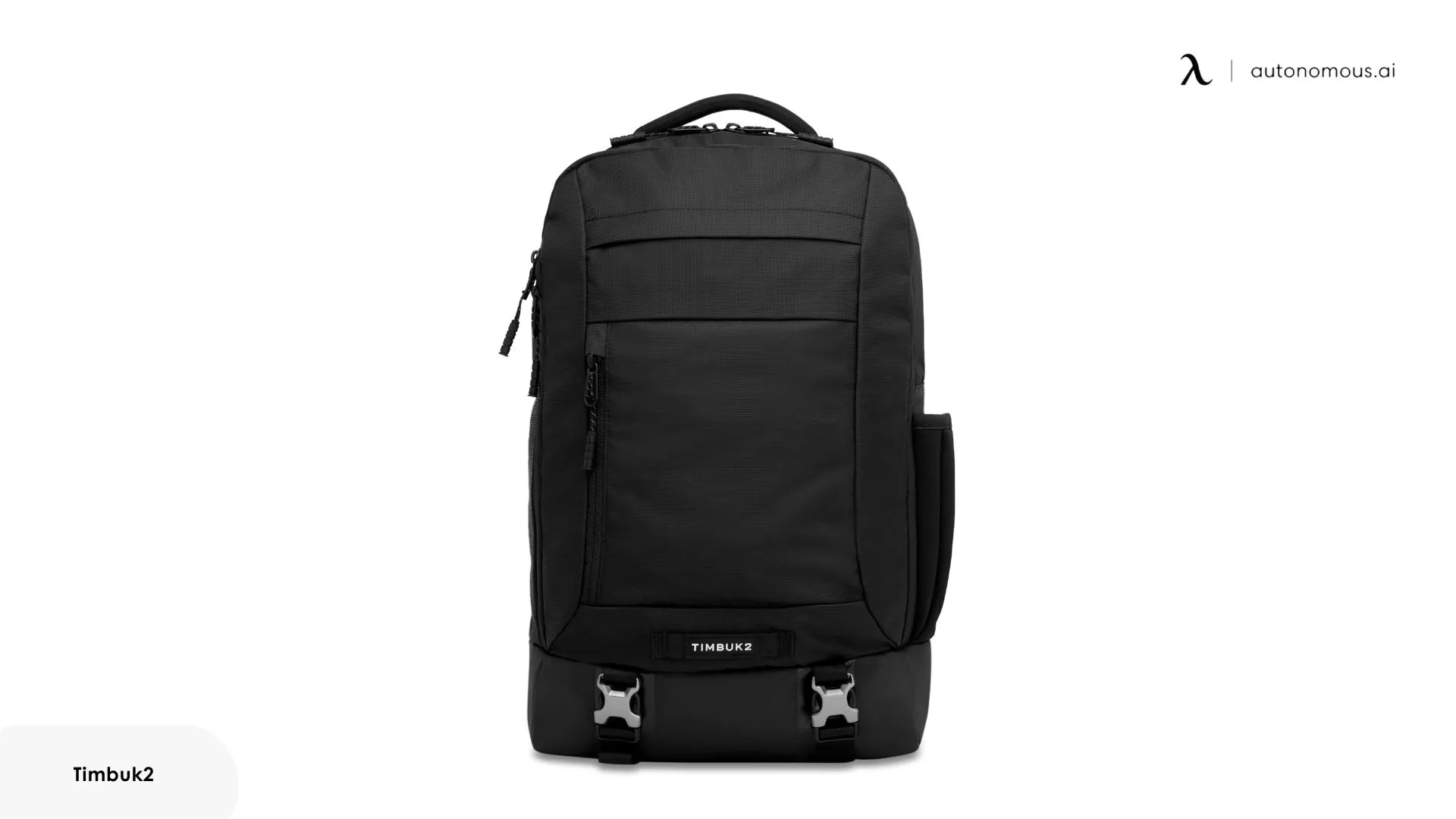
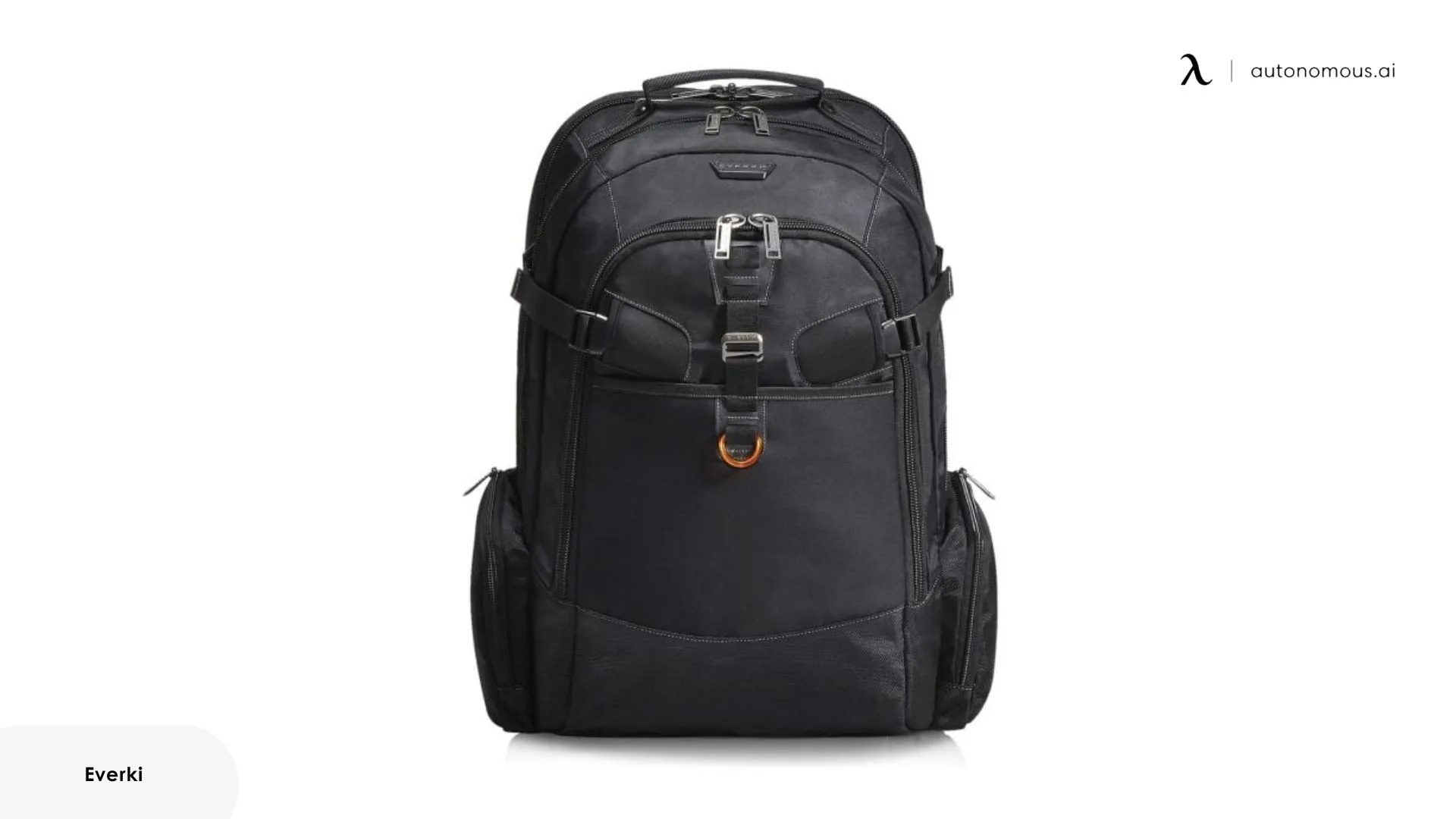
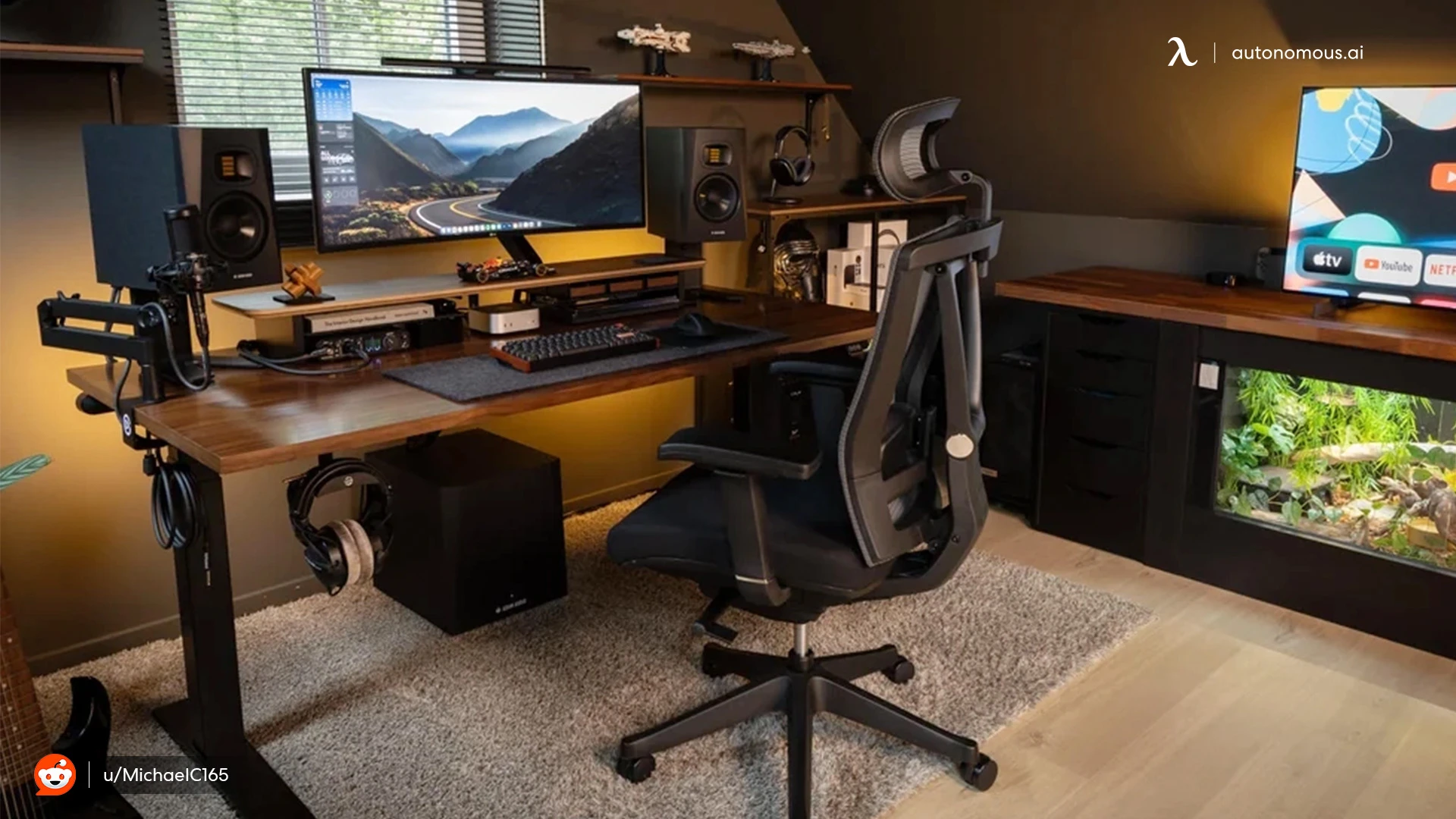

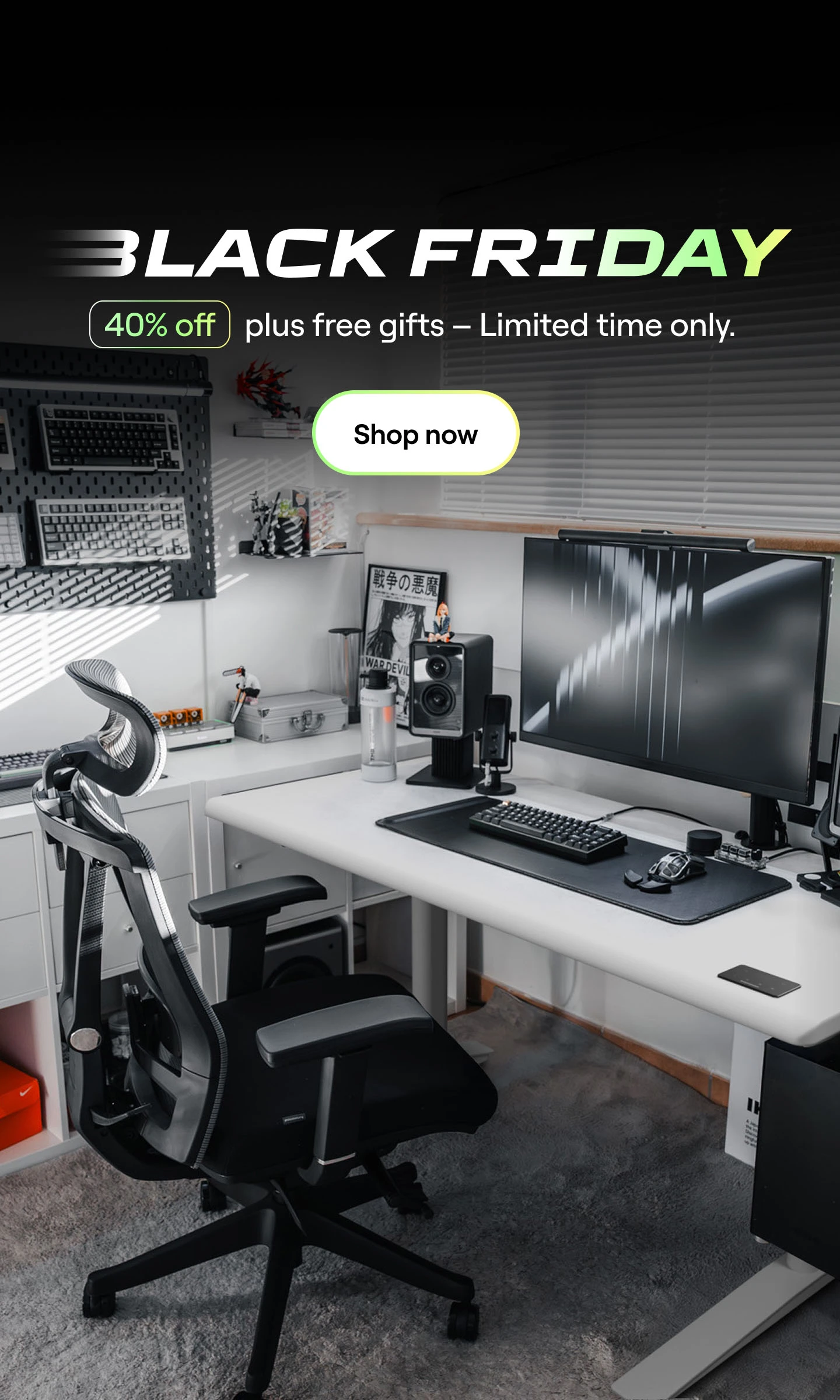
(1).webp)
